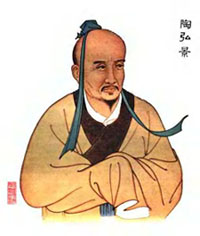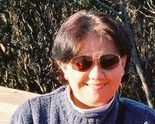

Written by Tel Asiado.

Historicity of Shennong
It is uncertain as to whether Shennong is a completely historical figure or as a clan taken to refer to his people, the Shénnóngshì or "Clan of Shinong." Since shì can mean both "clan" and "maiden name" and serve as a masculine honorific like "mister" or "sir", it has also been used in reference to his people. In any case, Shennong as a protohistorical ethnic group should not be confused with Shennong the eponymous, traditional "ancestor" of this social group.
In Chinese mythology and culture, Shennong was the second of the legendary three emperors referred to as the "Three Sovereigns" or "Three Emperors, " namely: Fuxi, Shennong, and Hungdi. All of them were medically-oriented.
Fuxi discovered the bagua or "eight trigrams", the symbolic basis for medical, philosophical, and astrological thinking. Shennong, considered the founder of Chinese medicine, was known as the Divine Husbandman and as the Yan Emperor or Emperor of the Five Grains. He was also known as the "Red Emperor" because his patron element was fire; the first King to be called as Yan Di, meaning the "Emperor of Fire." Huangdi, the famed "Yellow Emperor" who ruled in the 27th century BC, was at one time believed to have written the Huangdi Neijing (The Yellow Emperor's Classic of Internal Medicine). However, his work was actually composed much later, in the 3rd century BC. Despite this discrepancy, for centuries the Neijing has been revered and provides the theoretical concepts for traditional Chinese medicine (TCM.)
Shennong the man, according to Chinese mythology, was the second of the ancient legendary Chinese emperors. Said to have been born in the 28th century BC, his mother a princess and his father a heavenly dragon. His name literally means "Divine Farmer" (Shinno in Japan; Sinnong in Korean, and Thần Nông in Vietnam.) Considered as a man with supreme power, he had the head of a bull and the body of a man, he spoke after three days of his birth and walked within a week. He started plowing the field when he was three years old.
Referred as the "God of Chinese herbal medicine," Shennong is believed to have classified 365 species of herbs or medicinal plants, later the basis of herbologica studies. Tea is said to be one of his discoveries and may have been of great benefit to Shennong during his research into herbal medicines as tea is meant to be an antidote for over 70 different poisonous herbs. Chinese legend says that the discovery of tea was an accident that occurred when tea leaves from twigs being used for fire rose up on a column of hot air and subsequently landed in the water being boiled. Being naturally adventurous and a keen herbalist, Shennong tried this brew and the rest about tea as known today is history.
For thousands of years, Shennong’s great spirit of "benefiting and rescuing people" has been highly respected and praised. It was this very spirit that spurred a lot of great physicians and pharmacologists of later ages to make unremitting efforts to carry on the great tradition of "saving the people and serving the society" in Chinese medicine, bringing it to a great height of development.
Major Accomplishments
Shennong, the legendary second emperor of China and culture hero of Chinese mythology, has been traditionally given credit for various accomplishments, such as teaching the ancient Chinese people for their practices of agriculture, inventions of farm implements, discoveries of modern crops, use of herbal drugs, identifying and classifying hundreds of medical (and poisonous) herbs, and other traditional Chinese healing practices.
In Herbal Medicine
Referred by the Chinese people as the "God of Chinese herbal medicine," Shennong influenced the Chinese people on the use of herbal drugs. He is said to have extensively identified and tested hundreds of herbs. He personally tasted them to ascertain their medicinal value and effects on the human body and help relieve people of their afflictions and sufferings. In the legend, Shennong had a transparent stomach and things he ate could be clearly seen. With this extraordinary feature, he could tell which plants had medicinal or poisonous effects.
Tea is said to be one of Shennong's discoveries; in fact, it may have been of great benefit to him during his research into herbal medicine as tea is meant to be an antidote for over 70 different poisonous herbs. Tea legend in China states that its discovery was an accident that occurred when tea leaves from twigs being used for fire rose up on a column of hot air and subsequently landed in the water being boiled. Being a keen herbalist, he tried this brew and the rest about tea is history.
In Agriculture
Shennong reportedly discovered modern crops like wheat, rice, millet, bean, and sorghum. These crops are popularly called as the five grains. For this unique discovery, he is called as "The Emperor of Five Grains."
He also invented the plow, hoe, plow, axe, digging wells, agricultural irrigation, preserving stored seeds by using boiled horse urine, the weekly farmers market, the Chinese calendar, and to have instituted the harvest thanksgiving ceremony. He taught his people to be farmers, and found and tested plants that had curative or poisonous qualities.
In Chinese Medicine
Shennong is generally looked upon as the father of Chinese medicine, although most authorities agree that the Bencaojing (Classic of Materia Medica), was written about the time of Christ. He is said to have refined the therapeutic understanding of taking pulse measurements, acupuncture, and moxibustion. He supposedly wrote down much of this information in the Bencaojing, where he categorized the medicines as superior (non-poisonous and rejuvenating), medium (having some toxicity based on the dosage and exerting tonic effects), or inferior (poisonous but able quickly to reduce fever and cure indigestion). Shennong is said to have introduced the technique of acupuncture in China.
The Divine Farmer's Herb-Root Classic
The Chinese literary work The Divine Farmer's Herb-Root Classic is the most well-known work attributed to Shennong. It was first compiled some time during the end of the Western Han Dynasty, several thousand years after Shennong. It lists the various medical herbs such as lingzhi which were discovered by Shennong and given grade and rarity ratings. This work is considered to be the earliest Chinese pharmacopoeia. It is said to have catalogued 365 species of medicinal plants that later became the basis of herbological studies in China for thousands of years, and considered as one of the key reasons for China's advanced medicinal practices to this day.
Death
Shennong is said to have died from a toxic herb overdose as a result of an experiment for which he was unable to get an appropriate antidote in time. According to some versions of the Chinese myths, he performed numerous researches into the properties of plants by experimenting upon his own body. Apparently in one of his tests leading to his death, he ate the yellow flower of a weed that caused his intestines to rupture before he had time to swallow his antidotal tea, therefore giving his life for humanity.
He has since received special honours as the "Medicine King." Shennong was deified by his people as a tribute to his numerous works. In Chinese mythology he is called the San Huang, considered to be the god of wind and the patron of pharmacists. The sacrifice of cows or oxen to Shennong in his various manifestations is said not to be appropriate, instead pigs and sheep are acceptable. Fireworks and incense may also be used, especially at the appearance of his statue on his birthday, lunar April 26, according to popular tradition. Under his various names, Shennong is the patron deity of farmers, rice traders, and practitioners of Traditional Chinese Medicine (TCM.)
Resources
- Chinese Historical and Cultural Project. Tea's Wonderful History.
- Encyclopaedia Britannica. Shennong.
- Cultural China. Shennong. Shennong.
- Cultural China. The Legend of Shennong Tasting Hundred of Herbs.

About the Author
Tel Asiado is a writer, author, content producer, and business consultant. She owns various niche websites. Her articles reflect her passions in writing & reading, biographies & histories, inventions & discoveries, to classical music, art & literature and small business. Tel has produced non-fictions, e-books and anthologies, and has written numerous articles on varied subjects online and in print. Her education is MBA, BScience in Chemistry, and Diploma in Small Business & Internet Mktg.
Winter Survival Food Handbook

PDF Plant Magazines
Types of Wild Food
Geographic Zones Seasons
Disclaimer
EdibleWildFood.com is informational in nature. While we strive to be 100% accurate, it is solely up to the reader to ensure proper plant identification. Some wild plants are poisonous or can have serious adverse health effects.
We are not health professionals, medical doctors, nor are we nutritionists. It is up to the reader to verify nutritional information and health benefits with qualified professionals for all edible plants listed in this web site. Please click here for more information.
Why Edible Wild Food?
- Food costs are rising
- Free, wild food is readily abundant
- Wild food adds nutrition to your diet
- Wild food can help treat various medical conditions





